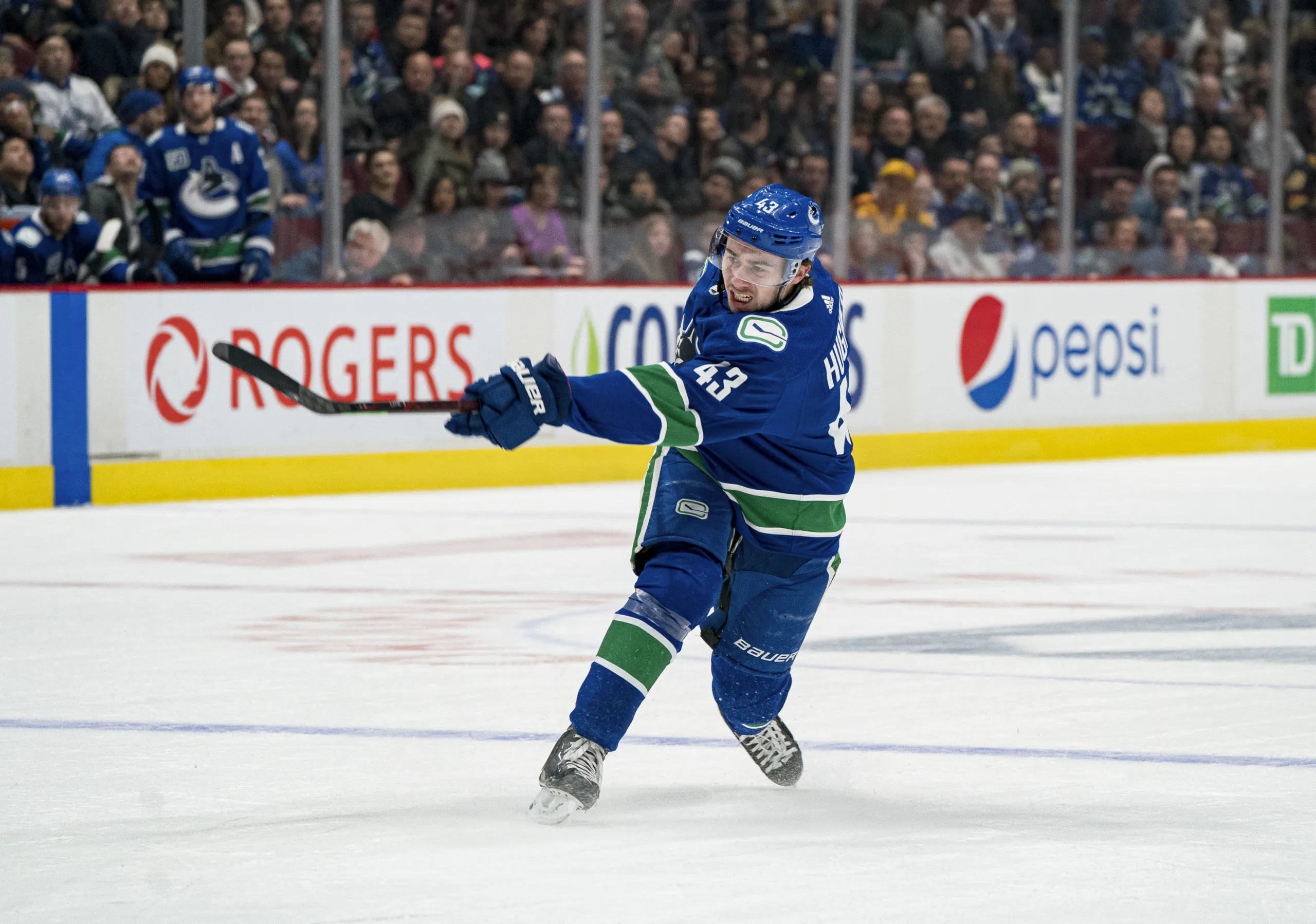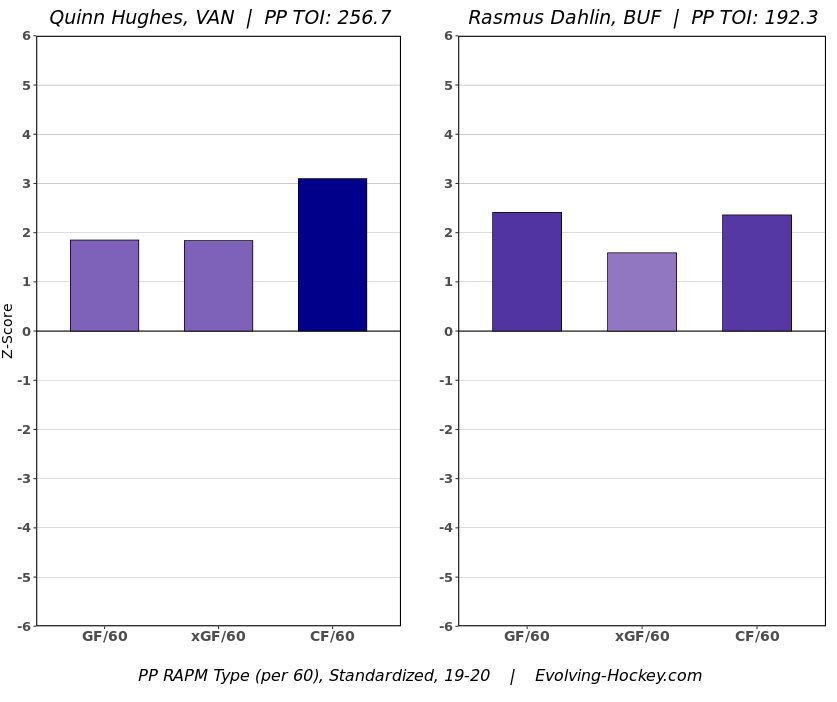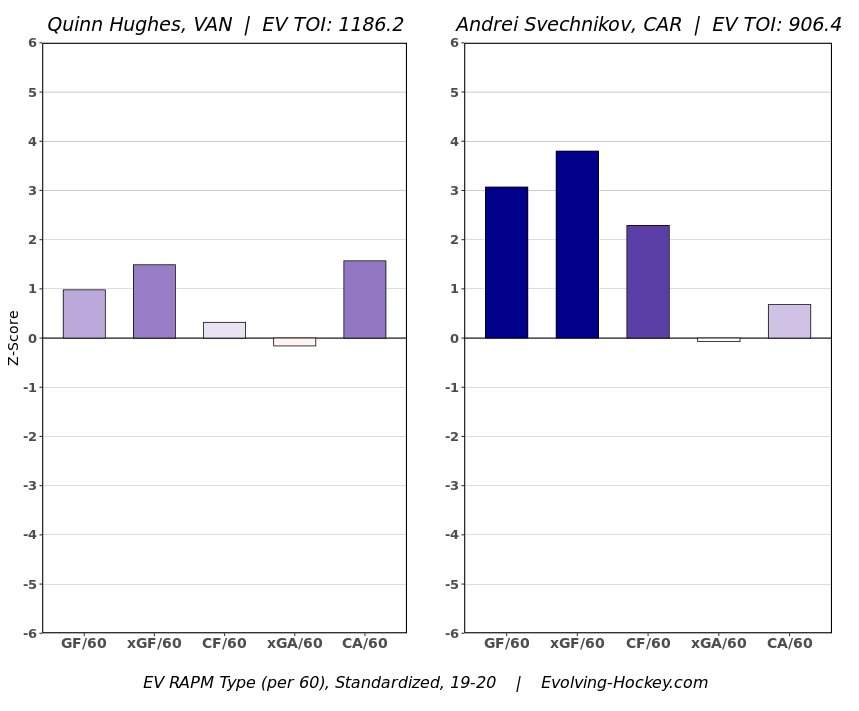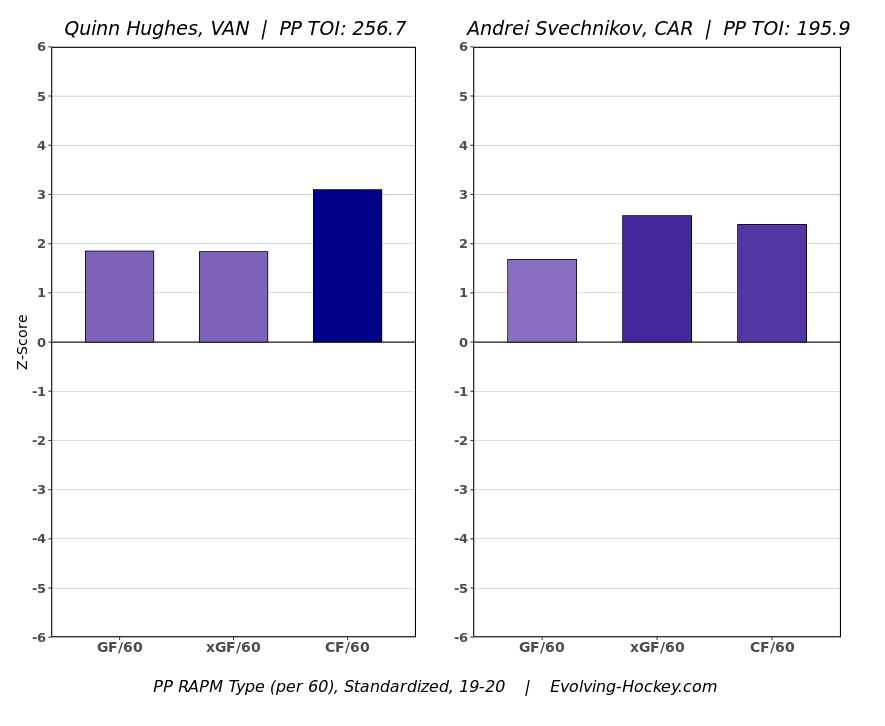Should Quinn Hughes have gone first overall in 2018?

In an age where the meaning of the word “defenceman” is drastically changing around the NHL, the Vancouver Canucks have found someone to lead the defensive revolution in Quinn Hughes. The way he surveys the ice, creates space, and drives play offensively is something Canucks fans had yet to see from a player on the back end prior to his arrival. This begs the question, why did Quinn Hughes fall to seventh overall?
There are a lot of easy answers, especially if you put yourself in the position of general managers heading into that draft. The biggest concern of all among GMs was certainly Hughes’ stature. Hughes is a short man, and a lot of NHL GMs are afraid of that, especially when it comes to defencemen. I mean, this is the same league that saw a defenceman like Erik Gudbranson drafted third overall just ten years ago because he was intimidating physically. Some scouts even compared Gudbranson to Chris Pronger, which is completely baffling in hindsight.
I wonder if teams gave him the Tryamkin treatment and made him watch old footage of Pronger? The results were similar. Anyway, what I’m trying to say is that sometimes GMs are afraid to break the norm, which causes them to draft safely instead of taking necessary risks.
When it comes to Quinn Hughes, I do think the size factor played into his draft position. Hughes was touted as an offensively minded defenceman that was still expected to be drafted in the top 5, but had he been a few inches taller, that “top 5 talent” label may have turned into an “undeniable first overall selection” label instead. Rasmus Dahlin comes in at 6’3” while Hughes stands at 5’10” — essentially a difference of half a foot — which is a pretty big difference in the minds of NHL general managers who are accustomed to shying away from undersized players. Despite what you may have heard, size does matter. At least for some GM’s.
Hughes has shown that he can overcome his stature, and in some cases even use it to his advantage. Slithering in and out of small spaces has been a staple of Hughes’ play through one season of NHL play.
The Dahlin selection completely made sense at the time of the draft as well, as he was touted as a near-generational defenceman after putting up solid numbers as a teen in the SHL. Dahlin also broke into the NHL at 18 years old, which is almost unheard of for a defenceman. Combine that with the numbers he has put up on a sub-par Sabres team (84 points in 141 games) and the hype is completely validated. That being said, Hughes has completely surpassed expectations and put himself in a spot where the case can be made he should have been drafted first overall.
The Numbers
Traditional stats lean Hughes’ way, with Quinn putting up 8 goals and 53 points this past season compared to Dahlin’s 4 and 40. Looking at the advanced numbers courtesy of Evolving-Hockey.com, Hughes has Dahlin beat in almost every key category at even strength for this past season, despite Dahlin having an extra season of NHL experience under his belt.

Hughes is also making a bit more of an impact on the power play, though they are pretty comparable.

You can make the argument that Dahlin’s numbers may be boosted a bit had he been on a better team, but part of being a first overall pick is making the team around you better, which is something Hughes has undoubtedly done, completely revitalizing the Canucks’ blue line. Hughes making this impact as a rookie is also quite the feat compared to these numbers coming in Dahlin’s sophomore year.
Hughes has not only been able to create more chances at even strength and on the power play, but he’s also been able to get the results. On top of that, Hughes has had a bit more success defensively, though we’ll have to wait and see how much of that was due to Chris Tanev.
None of this means that Dahlin is going to be bad player per se, as I have no doubts he will be an elite number one defenceman, potentially even top 5 in the league by the time he hits his prime. However, Hughes has passed him already and seems to be in a position where he will be able to improve on his last season.
Even just using the eye test, Hughes showed us what he could be right from the beginning.
That flash and creativity is something you rarely see from a player in their first game, let alone a defenceman.
The Other Guy
Here’s the thing, I’ve been comparing Hughes to Dahlin because that’s the easy comparison. Both are defencemen, both have offensive prowess, and both have changed the trajectory of their respective franchises.
The four other players selected between Dahlin and Hughes don’t really challenge for that first overall spot either. Jesperi Kotkaniemi shows some hope but hasn’t emerged as a next-level talent. Brady Tkachuk has had two good seasons but has struggled defensively. Barrett Hayton has had injury troubles but was also an odd choice by the Coyotes at the time. Finally, Filip Zadina has fought through injuries as well but could still pan out. You can see why Jim Benning and Co. fell over themselves running to the stage to pick Hughes when they knew he had fallen to them.
But “MISTA SVHECHNIKOV” may be the big challenger for Quinn Hughes.
Similar to Dahlin, the second overall pick in 2018, Andrei Svechnikov, broke into the league at 18 years old and made an immediate impact. His first season was relatively impressive as he managed to tally 20 goals and 37 points. That’s still a lower point total than both Dahlin and Hughes in their respective rookie seasons, but solid for a teen in the NHL.
Svechnikov’s 2019-20 season is where he took a huge leap, hitting 24 goals and 61 points in 68 games. His advanced numbers were stellar as well, especially on the offensive side where he surpassed Hughes in a few categories.

Their power play contributions are pretty similar, but Hughes does create chances a bit more often.

Making the argument that Andrei Svhechnikov is a bit better offensively than Quinn Hughes isn’t that much of a stretch, though generally you would hope a winger can score more than a d-man and that’s been the result to this point. Hughes being a defenceman is exactly the reason he would go first overall in a re-draft though.
Defencemen are more valuable than wingers, which is not really a bold statement in the slightest. So even if Svechnikov does edge out Hughes production-wise, that gap isn’t wide enough to justify taking a winger over a defenceman that high in the draft. BPA is always a sound strategy, but the upside of Hughes being such a special talent on the back-end still outweighs the cap on the impact a winger can make on a team. Through one season Hughes was on the ice an average of 21:53 per game, whereas Svechnikov came in around 16:44 – over 5 minutes less than Hughes. That makes a huge difference in the landscape of a season and even just game to game.
After only one NHL season, Quinn Hughes has had more of an impact than the two top picks from the 2018 NHL Draft, and even though all three will continue to improve, I have no doubts that Hughes will stay ahead of that curve, potentially even widening the gap between him and his draft counterparts.
Regardless, the Vancouver Canucks got a steal with their 7th overall pick in 2018.
Recent articles from Josh Elliott-Wolfe





